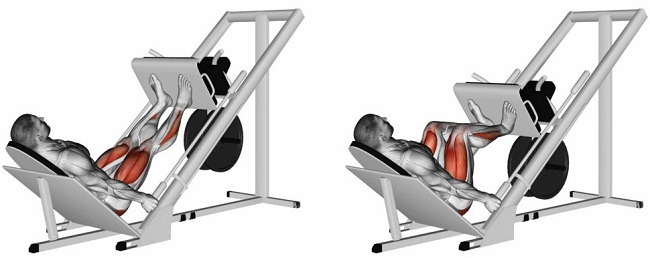Knee pain is common and can be a symptom of many knee conditions or injuries. The pain in the inside of the knee is also called the medial knee or inner knee pain. The medial knee is the area of the knee that’s closest to the opposite knee. Typically, medial knee pain occurs by the deterioration of cartilage, muscle weakness, and tightness around the knee. There are several structures on the medial side of the knee and problems in any one or more can cause pain. Knee pain on the inside is also by sudden trauma and develops gradually through overuse or poor lower limb biomechanics.
The knee is one of the most complex joints in the body, comprising the intersection of four bones, four ligaments, several tendons, two menisci, and articular cartilage.
Anatomy of Medial Knee
The knee is one of the largest and most complex joints in our body. The medial knee comprises several layers of structures that work together to provide stability and function. Structures on the medial side of the knee comprise the tibia, femur, vastus medialis obliquus muscle, semitendinosus tendon, gracilis tendon, sartorius tendon, adductor magnus tendon, medial head of the gastrocnemius muscle, semimembranosus tendon, medial meniscus, medial patellofemoral ligament (MPFL), superficial medial collateral ligament (MCL), deep medial collateral ligament (MCL), and the posterior oblique ligament (POL). The most significant structures for stabilization in the medial knee ligaments are: sMCL, dMCL, and POL. Damages to the medial side of the knee are most frequently isolated to these ligaments.
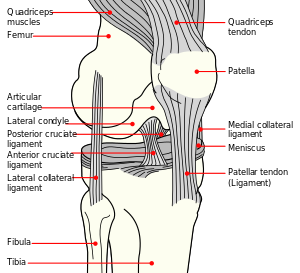
Causes of Medial Knee Pain
There are many causes of inducing inner knee pain. Here we consider the most prevalent causes of inside knee pain. It can link to an injury. Some of the most prevalent incidents that lead to knee injury and pain, combine a fall from high, sports injuries or enhanced activity.
Adults, particularly those over 60 years are most likely to experience knee pain. However, inner knee pain can also develop in kids and youngsters. The following are the most frequent possible causes of inner knee pain.
Medial Collateral Ligament (MCL) Tear
The medial collateral ligament (MCL) passes along the outside of the inner knee to secure the joint. If the ligament overstretches, you may have an MCL sprain. An MCL tear is the most prevalent source of medial knee pain in people below 50 years of age. Pain on Inside of Knee no Swelling; It is likely merely a minor injury, such as a small cartilage tear or a grade 1 sprain of the MCL.
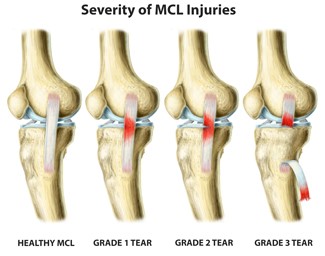
The MCL can also tear partially or fully. An MCL injury most commonly occurs after a sudden twisting or a force applies to the outer knee, such as in contact sports.
Symptoms of an MCL injury include: swelling, locking knees, stiffness, instability while standing or walking, and a popping sound at the time of impact. Pain aggravating by walking, bending the leg, stairs, and sports. There are three grades of MCL tear, treatment depends on how severely you have damaged the ligament.
Medial Meniscus Injury
The meniscus is semi-circular cartilage in the knee joint that provides a cushion between bones in a joint. There are two menisci in each knee. They provide cushions between the thigh and shin bones. Meniscus tears or damaged by a sudden twisting or a force through the knee, most commonly during sports or athletic activities.
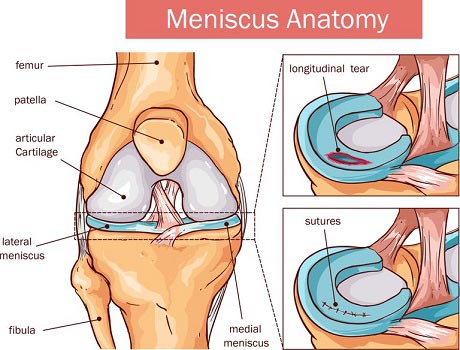
There are major types of meniscus tears are-bucket handle, flap, radial, and degenerative tears. Symptoms are inside knee pain, swelling, locking, instability, sense of imbalance, sharp pain when twisting your knee, and difficulty straightening the leg. The tenderness feels along the joint line.
Pes Anserine Bursitis/Tendinopathy
A bursa is a small, fluid-filled sac that serves to reduce friction between joints. There are several bursae in our bodies. The pes anserine is the point on the inside of the knee where the tendons of the sartorius, gracilis, and semitendinosus muscles fuse and insert. They’re collectively called the pes anserinus. If the bursa becomes overused or irritated, it can generate extra fluid that leads to swelling and pressure on your knee. This inflammation is known as pes anserine bursitis.
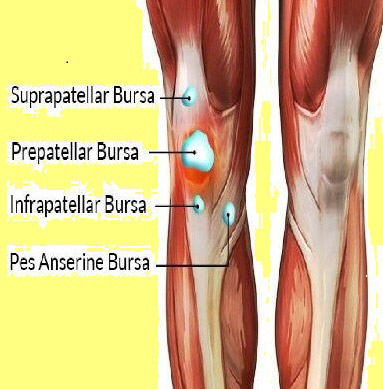
There are several factors for inducing pes anserine bursitis such as- OA, obesity, medial meniscus tear, turning out your knee while standing or walking, and tight hamstring muscles.
Symptoms of Pes anserine bursitis/tendinopathy are gradual onset of medial knee pain approximately 2-3 inches below the knee joint, swelling, stiffness, weakness and that affects sleep. Pes anserine bursitis pain cans aggravating by Climbing stairs, resisting knee flexion, and exercise. Most frequent in obese middle-aged women or runners and swimmers.
Treatment for Pes anserine bursitis is a combination of rest, ice, stretches, strengthening exercises, corticosteroid injections, or occasionally surgery.
Osteoarthritis (OA)
Osteoarthritis (OA) is degenerative disease that wear and tear to the cartilage lining the medial side of the joint, causing the bones in your joints to grind together. If you experience inside knee pain while putting pressure on joints, such as walking up and down stairs or sitting down in a chair, you may have OA. This pressure causes pain; your symptoms may get more severe as the day goes on.
Symptoms of osteoarthritis typically come on gradually and include morning stiffness, inner knee pain, swelling, audible clicking, reducing leg movements, and common over the age of 50.
Osteoarthritis is aggravates after prolonged rest or activity and cold weather. There are three stages of osteoarthritis, mild, moderate, and severe based on how badly the joint is affected. Treatment depends on the severity that includes exercises, medication, heat/ice, acupuncture, injections, and knee braces.
Medial Plica Syndrome
Plica are small folds in the joint lining. Medial plicae cover the inner knee. Inflammation of a fold in the synovial membrane on the inner side of the knee causes Plica syndrome. Overuse, such as repeatedly flexing the knee, can irritate the medial plicae. This causes the folds to thicken and become stuck between the bones. Besides dull inner knee pain, you may encounter locking knees and probably a cracking sound.
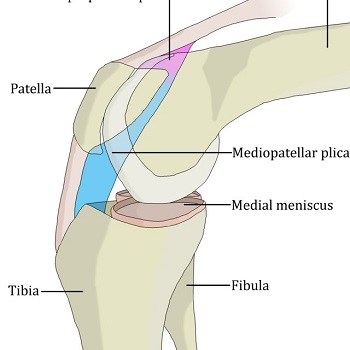
Symptoms of medial plica are anteromedial knee pain, tenderness, audible clicking sound when you move your knee. Symptoms are aggravated by frequent knee bending and straightening, stairs, getting up after sitting or lying, and squatting. Treatments for plica syndrome are knee exercises, anti-inflammatory medication, rest, and surgery.
Other Fewer Causes of Medial Knee Pain
Pain on the inside of the knee will occur from injuries or conditions, chiefly in the hip and lower back. The sciatic nerve gets squeezed or compressed radiating pain down the leg. Other sources of medial knee pain in young athletes include- tumors, slipped capital femoral epiphysis and Perthes’ disease within the hip.
Inner Knee Pain by Activity
- Inner Knee Pain When Straightening Leg: Pes Anserine inflammation is the main offender here because the bursa will easily get press when straightening the knee.
- Inside Knee Pain When Walking: Most medial knee pain gets worse with knee flexion, particularly once weight bearing through the leg. If it’s worse once standing it may indicate MCL tear or meniscus tear if it happens after you are sitting and bending, it will be pes anserine inflammation or plica syndrome.
- Pain on the Inside of Knee When Walking & Running: Knee pain medial aspect during or after running is most generally caused by a cartilage tear or runner’s knee.
- Anterior Medial Knee Pain: If your pain within the inner knee is coming around to the front of the knee, it’s going to be a problem with the kneecap or Runner’s Knee.
- Medial Knee Pain When Sitting Cross-Legged: Pain within the inner aspect of the knee once sitting cross-legged is possibly due to a meniscus tear as this position places additional stress on the cartilage.
- Pain on the Inside of the Knee after Sitting: Inner knee pain that’s at its worse after you first move the knee once sitting or lying down for a while tends to be due to knee inflammatory disease. The pain typically eases once you’re up and about. It may even be due to plica Syndrome.
Recommended Post
- UFlex Athletics Knee Compression Sleeve Reviews
- Top Rated Mueller Knee Brace for Knee Support
- Top-Rated DONJOY ACL Knee Braces
Inner Knee Pain Treatment
Knee pain causes by injuries and inflammatory diseases, home remedies may fix the problem. The most frequent remedies for minor knee pain are rest, ice, compression, and elevation, known as RICE Protocol. The following treatments may be effective:
- If your injury is caused by sports, such as running, rest the part until the knee has healed.
- Applying ice to the injured area of the knee four times a day, for 15 minutes at a time, can reduce inflammation and pain.
- Over-the-counter anti-inflammatory medications, such as aspirin, naproxen, or ibuprofen, can diminish your swelling.
If these home treatments do not ease your symptoms or persist for three days, talk to your physicians.
Other inner knee pain treatments
If your inner knee pain worsens, or home remedies don’t ease symptoms, go see your physician. Some approach for more deliberate knee injuries includes:
- Drainage of any fluid growth that causes pain
- Steroid injection applies to treat bursitis and osteoarthritis.
- Physical therapy for the inner knee may involve stretching and strengthening exercises around the knee muscles and ultrasound therapy.
- Wearing a knee brace during athletic or everyday activities can support.
Arthroscopic surgery of the knee is the most frequently used for a meniscus tear.
Inner Knee Pain Exercises
Stretching and strengthening exercises of the knee may help to diminish pain and inflammation. The most appropriate exercises for inner knee pain will depend on the severity of the condition you have.
Your physical therapists recognize strengthening the leg muscles, specifically the quadriceps and hamstrings, and exercises may comprise:
- Quad Stretch: Stretching the quadriceps can further diminish pressure on the knee joint.
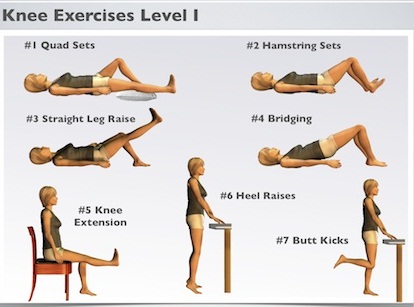
- Hamstring Stretch: This exercise releases the tension on the back of the leg to diminish pressure on the knee joint.
- Straight leg raises
- Swimming
- Half/ Mini Squats: Half squats strengthen the front of the legs without giving excess pressure on the knees.
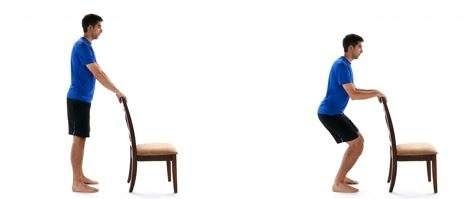
- Leg presses
